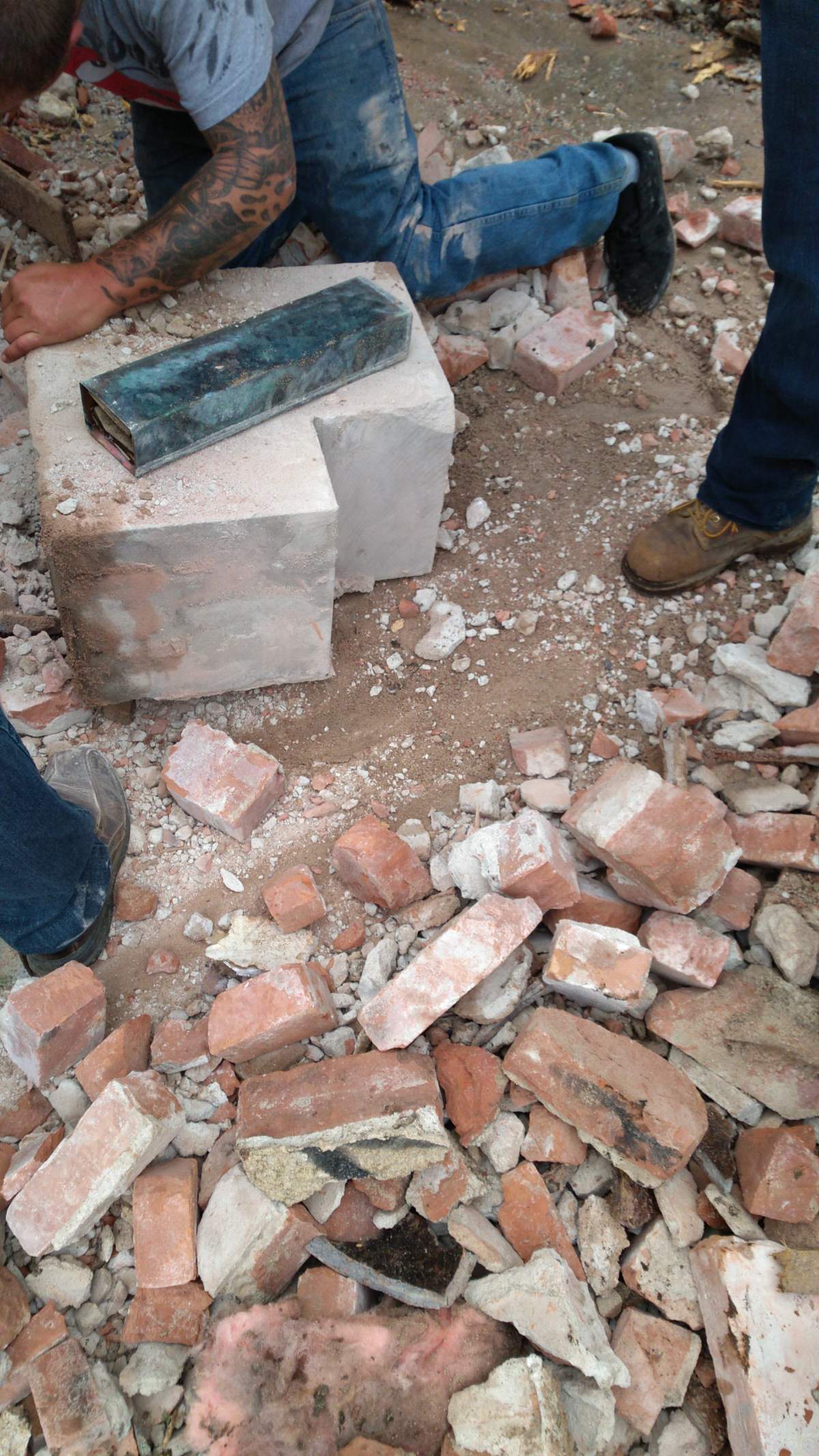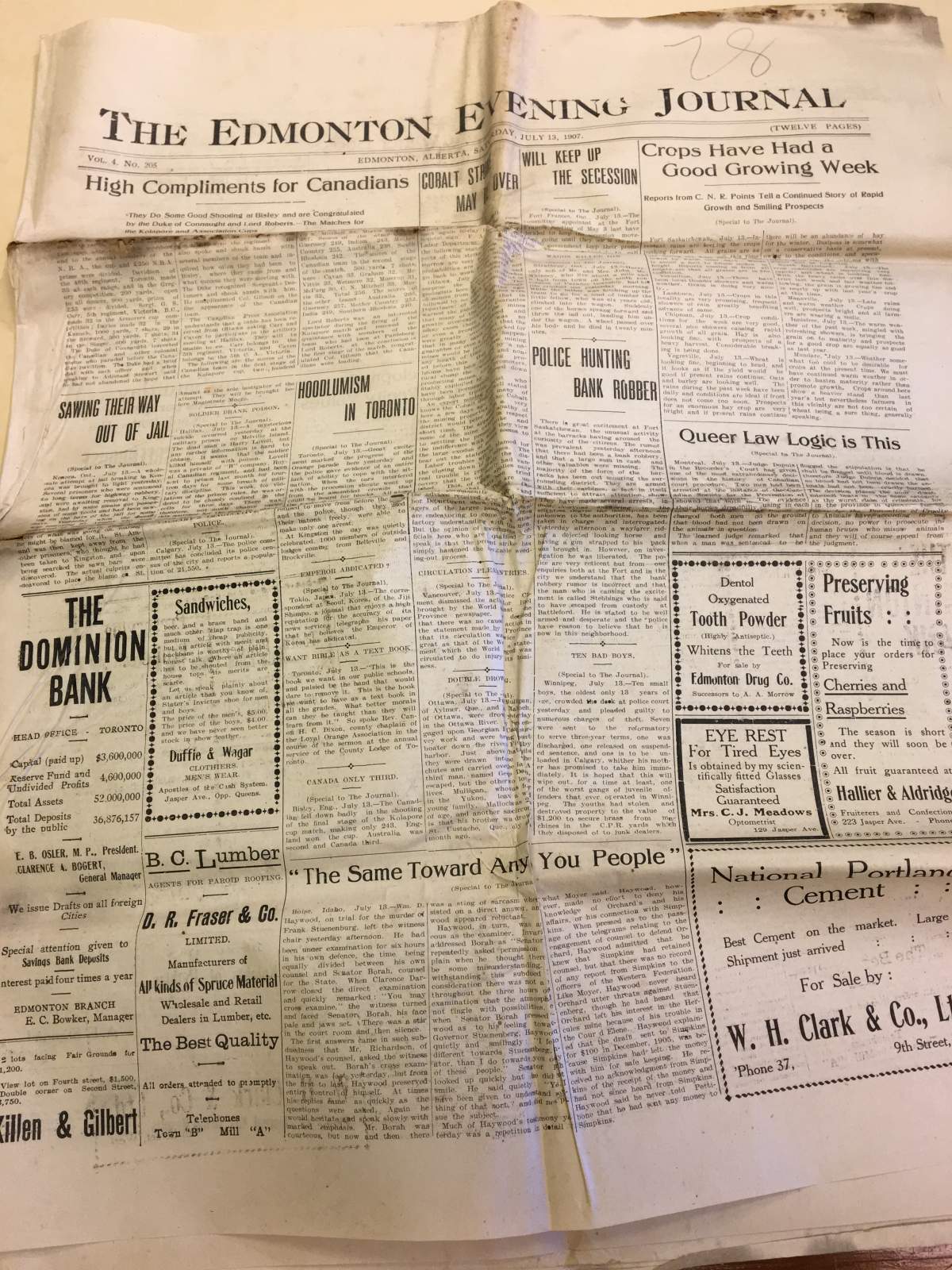More than a week after two time capsules were discovered tucked in the cornerstones of the old Knox-Metropolitan United Church, the decades-old rusty boxes were finally opened and their contents revealed.

City archivist Kathryn Ivany and historian David Johnston met Wednesday morning to peek into the past. The capsules were pulled from the church rubble after the demolition on Aug. 27.
Dave Dyrbye with Kota Contracting said structural cracks and failing bricks meant the 111-year-old church could not be saved.
“So whether we came along and bought the church or not it was going to have to come down.”
READ MORE: Former Knox-Metropolitan United Church demolished to make way for condos
Dyrbye said the old congregation wanted to preserve a part of its past and revealed to him he would discover a surprise.
“The first thing we did was go to those corners and we carefully took those big blocks out,” Dyrbye said.
“Low and behold underneath there were two time capsules – one from each era.”
The time capsules were handed over to the experts.
Johnston said he has seen old newspaper clippings behind walls in homes, but rarely are there time capsules preserved in larger buildings.
“I wasn’t really aware of them at all,” Johnston said. “It was really a last minute thing that the developer had been made aware by the church that there was a box under each cornerstone.”

Get breaking National news
READ MORE: Aging Edmonton churches merge in attempt to stay afloat
The lid of the first tin box that dated back to 1907 popped when it was opened, and it was stuffed with church pamphlets and newspapers.
“All from July 13, 1907,” said Ivany, which appeared to be the day the congregation dedicated the church. Laying the cornerstones was typically part of the ceremony.
“Usually, masons were involved and they would actually parade through town carrying the box.”
The most notable piece stuffed inside was a handwritten list of the officials of the church. Unlike many other documents in the second capsule that were torn and water damaged, the more than century-old papers came out unscathed.
The newspapers give insight into our community and the headlines of the day.
“Hoodlumism in Toronto, and a there was a bank robbery in Fort Saskatchewan,” read Ivany, from the Edmonton Journal dated back to 1907.
Another story printed in 1907 revealed the population of Calgary was 21,000.
A Wanted ad sought out a “bright boy” and “young girl to pack chocolates and make herself useful in office.”
“Showing what they put in always gives you an idea of the way people were thinking in an earlier period, said Ivany, “which I always think is fascinating.”
The capsules also revealed the devastation dealt to the congregation back in 1942; according to a poem tucked alongside the documents, the church had burned down on New Year’s Day.
“Almost in one short hour the inferno reigned,” read Ivany from that poem. “Where peace and calm had been.”
The bricks from the original church were re-used in the new build and the capsules put back in.
“You think, 50 or 100 years from now those types of connection pieces that people can put in their hands and hold are going to be gone,” said Johnston, referring to the demise of hard-copy newspapers.
“These are pretty important tangible pieces that we can sort of have and look at and bring us back to what was going on at the time.”











Comments